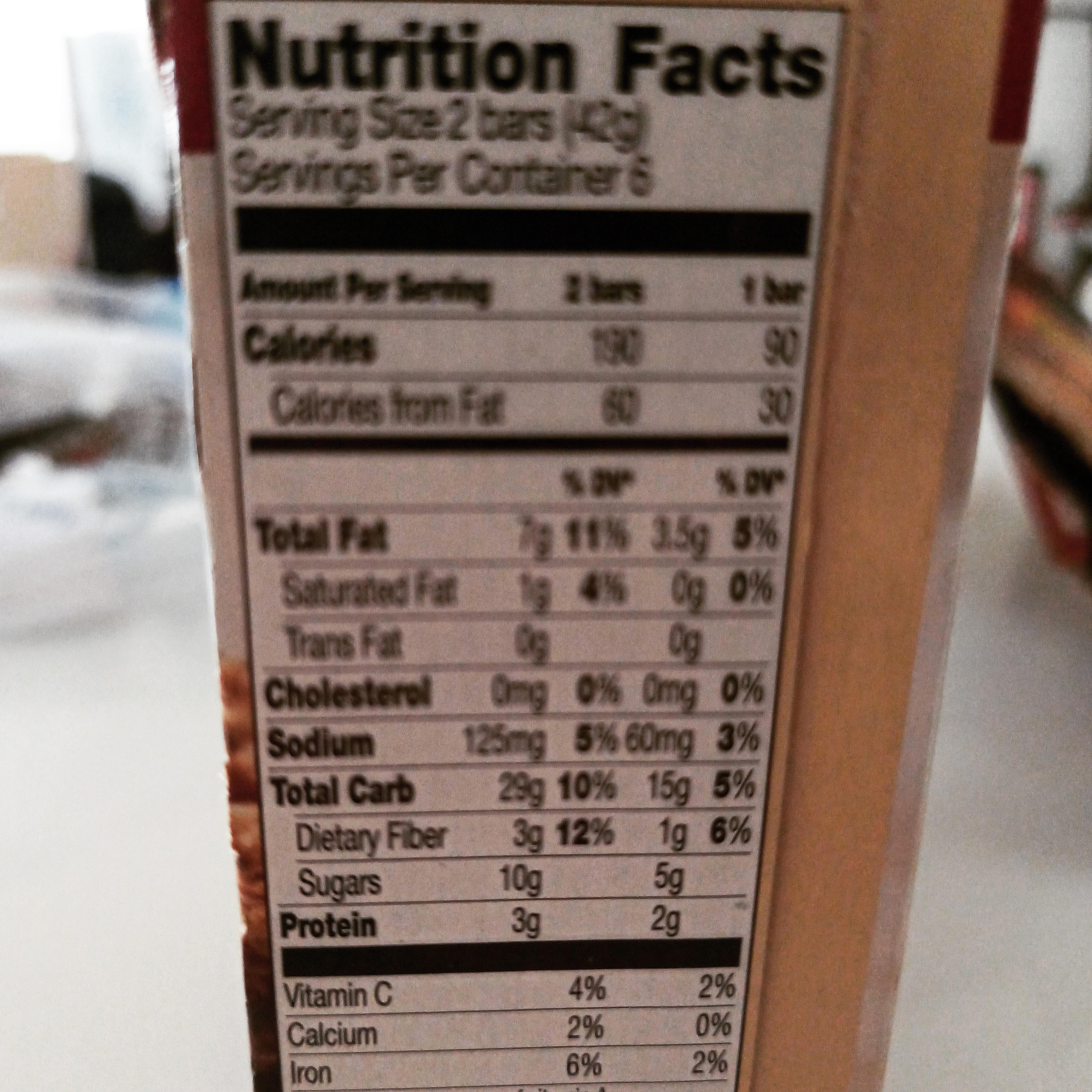Fuzzy math, indeed.
I was chowing down on some Nature Valley Pumpkin Spice granola bars the other day, when I noticed the perplexing Nutrition Facts label on the packaging:

If I am reading the percentages (%) and Reference Amounts Customarily Consumed (RACC) correctly, I should probably hold a conference call with my elementary school teachers first.
Let’s take the Saturated Fat content as an example. According to this packaging, one (1) granola bar contains 0g of Saturated Fat. However, doubling that amount to two (2) increases the content to 1g, which suddenly comes to 4% of one’s Recommended Daily Allowance (RDA) of Saturated Fat. I suppose we can infer that .25g of Saturated Fat = 1% of the RDA, but if one (1) bar didn’t have any to begin with, how does adding another give us 4%?
Not to mention, should consumers even be aiming for 100% Saturated Fat intake on a daily basis? Is it analogous to selling products for $9.99 as opposed to $10.00? Of course not…if you are eating nearly 100% Saturated Fat everyday, you’re going to be in for a world of pain just after a few weeks. But if you saved one penny everyday on a purchase, you’d have just enough after one year to buy…a package of Nature Valley Granola Bars. Whoops, there’s tax added after, too bad.
That’s just one of many cogent instances of a mostly pointless yet nearly ubiquitous Nutrition Facts label. Did you happen to notice the Calcium, Iron, and Protein content, when comparing one to two granola bars?
You see, in the United States Nutrition Facts only became required on packaged food and beverages in 1990; even these days, some smaller packaging asks you to send a letter or call the company to inquire about nutrition information.
Moreover, as per the International Food Information Council Foundation—
Serving sizes listed on packaged foods and beverages are determined by how much of that item people typically consume at one time. They are not recommendations for how much people should consume.
Quite the revelation…but then again, how does one determine a serving size for butter, soft drinks, or crème brûlée, things no one should be consuming?
Interestingly, it was only in 1973 that Nutrition Facts labels first started to appear on FDA (Food and Drug Administration)-regulated products; the things that had to be shown were:
- the number of calories
- protein (in grams)
- carbohydrates (g)
- “fat” (g)
and the percentage of the U.S. Recommended Daily Allowance of:
- protein
- vitamin A
- vitamin C
- thiamin (vitamin B1, which converts carbs into energy)
- riboflavin (vitamin B2, breaks down carbs/proteins/fats to produce energy, and allows oxygen to be used by the body)
- niacin (vitamin B3, helps keep nervous and digestive systems and the skin healthy, is involved in cellular metabolism)
- calcium
- iron
Curiously, sodium, saturated fat and polyunsaturated fat contents were not mandated to be on the original Nutrition Facts labels, as categories were at the discretion of the food manufacturers.
—
Although I have no hope for Nutrition Facts reform in the current Beltway morass, having a quantitative baseline legend ( x {for example, # of grams= 1% of the RDA of a nutrient}, 1+1 = 2, etc.) would be a start. Not allowing food and beverage companies to include various incomprehensible chemical compounds and additives is a topic for another day – then again, many of us can opt not to buy those things – but I would like to see some clarity and honesty when it comes to nutritional content.

Leave a Reply